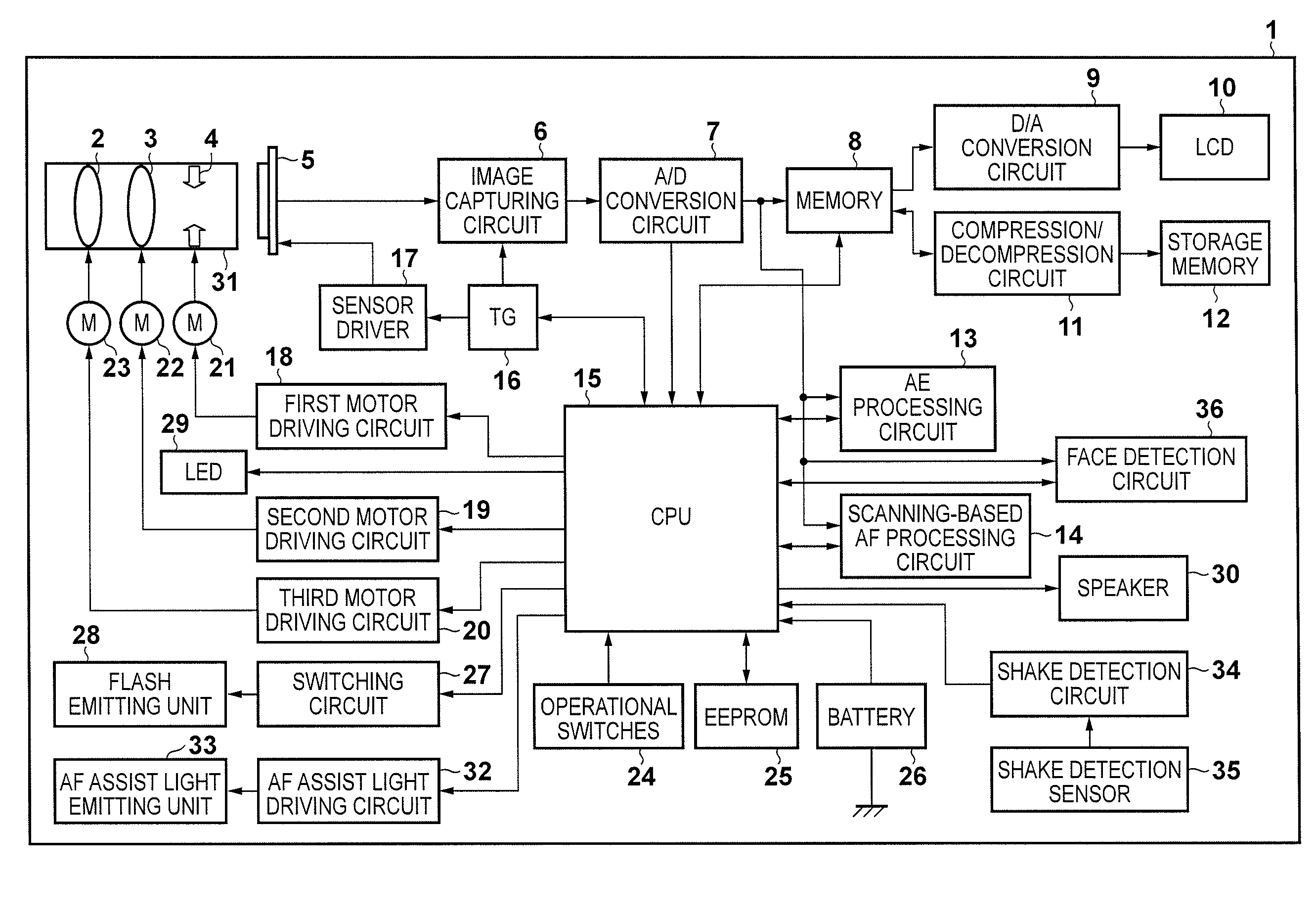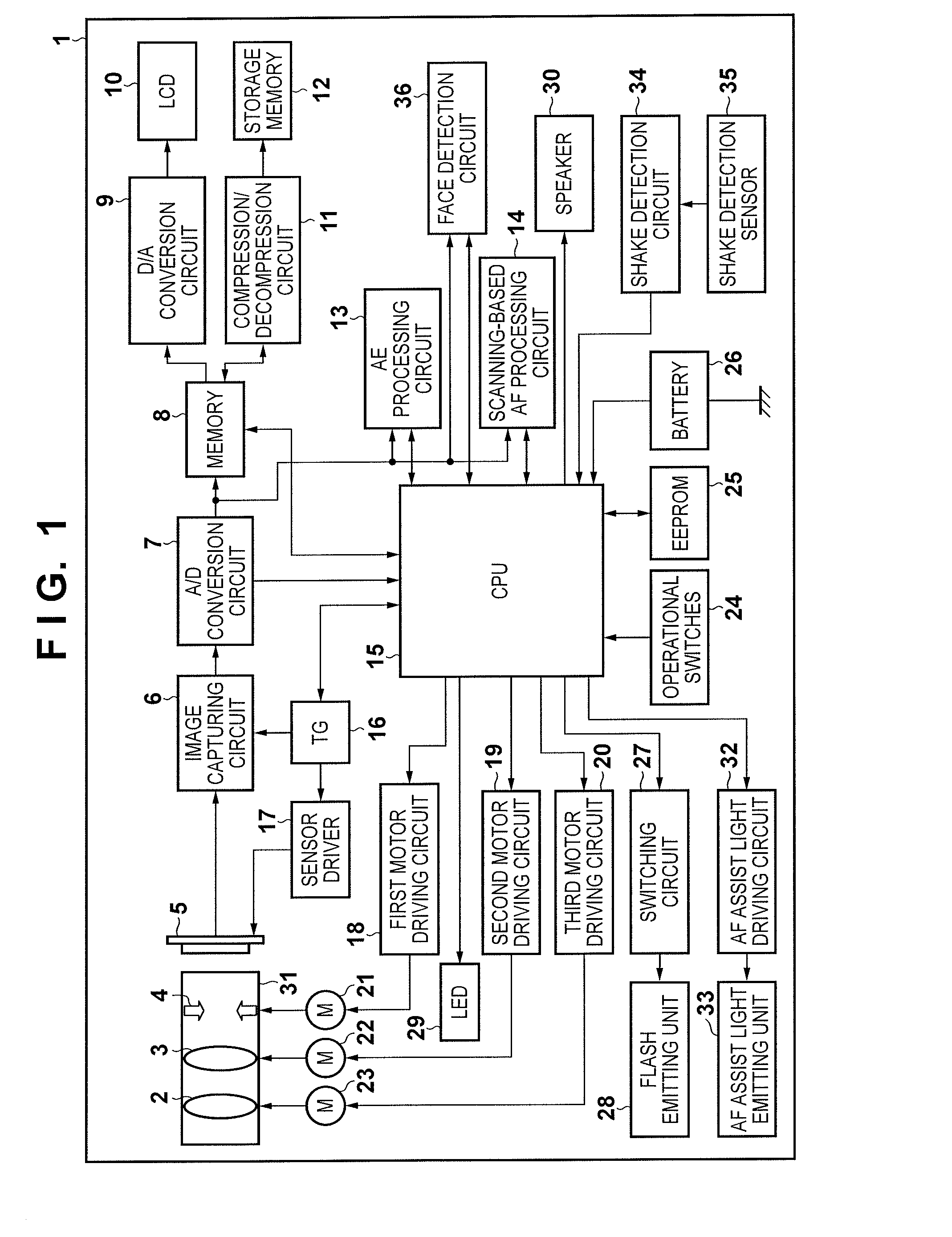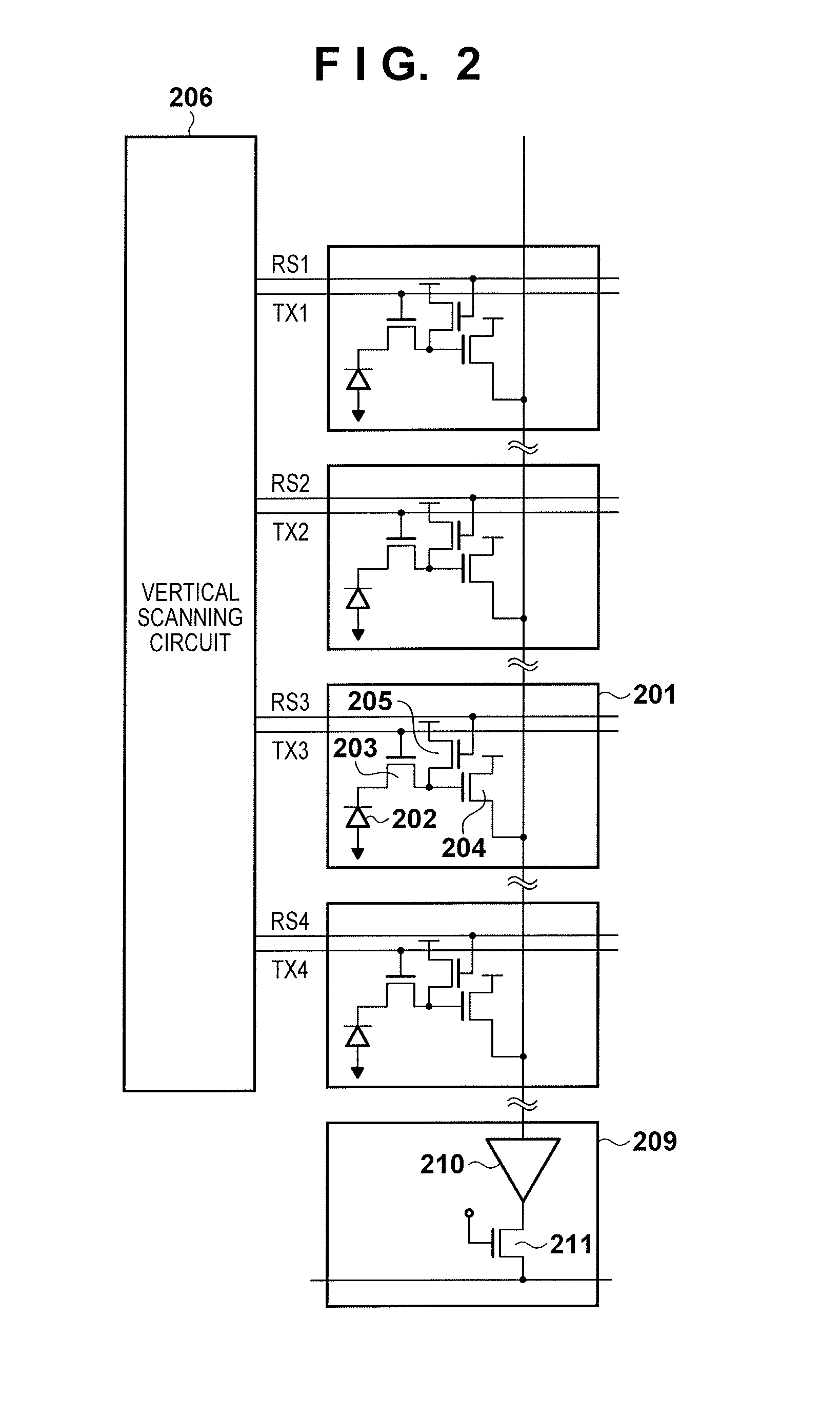Image capturing apparatus and control method thereof
a technology of image capturing and control methods, which is applied in the field of image capturing apparatuses and control methods thereof, can solve the problems of affecting the appearance of through-the-lens images, inhibiting af accuracy, and affecting the accuracy of af, so as to maintain the quality of through-the-lens images displayed, without increasing processing time required
- Summary
- Abstract
- Description
- Claims
- Application Information
AI Technical Summary
Benefits of technology
Problems solved by technology
Method used
Image
Examples
first embodiment
[0047]Apparatus Configuration and Basic Operations
[0048]FIG. 1 is a block diagram illustrating the overall configuration of an image capturing apparatus according to a first embodiment of the present invention.
[0049]In FIG. 1, an image capturing apparatus 1 corresponds to a digital still camera, a digital video camera, or the like, for example. A zoom lens group 2 and a focus lens group 3 configure an optical imaging system. An aperture 4 controls a light flux amount that traverses the optical imaging system. The zoom lens group 2, the focus lens group 3, and the aperture 4 are configured within a lens barrel 31.
[0050]An object image that has traversed the optical imaging system is formed upon an image capturing surface of an image sensor 5 and is photoelectrically converted. An image capturing circuit 6 receives an electrical signal resulting from the photoelectric conversion performed by the image sensor 5 and generates a predetermined image signal by executing various types of im...
second embodiment
[0136]Next, a second embodiment of the present invention will be described. The second embodiment differs from the aforementioned first embodiment in that a process for roughly adjusting the focus (continuous AF) is carried out before SW1 turns on (that is, before an image capturing preparation instruction). This continuous AF is executed before determining whether or not a point light source is present within an AF frame, as will be described later. Note that the configuration of the image capturing apparatus 1 is the same as that illustrated in FIGS. 1 and 2, and thus descriptions thereof will be omitted.
[0137]Overall Flow of Image Capture Processing
[0138]The image capture processing according to the second embodiment will be described using the flowchart shown in FIG. 14.
[0139]As in the first embodiment, the image capture processing sequence is executed when the main power switch of the image capturing apparatus 1 is on and an operational mode of the image capturing apparatus is ...
third embodiment
[0160]Next, a third embodiment of the present invention will be described. The present third embodiment differs from the first embodiment in that a charge accumulation period at which pixels will not be saturated is searched out prior to SW1 turning on (prior to an image capturing preparation instruction), and the band of a band pass filter used during the normal image AF processing is switched based on the presence / absence of saturated pixels at the final charge accumulation period. Note that the configuration of the image capturing apparatus 1 is the same as that illustrated in FIGS. 1 and 2, and thus descriptions thereof will be omitted.
[0161]In the present third embodiment, the scanning-based AF processing circuit 14 detects a number of saturated pixels in the AF region and outputs that number, in addition to the AF evaluation value.
[0162]Image Capture Processing
[0163]The image capture processing according to the third embodiment will be described using the flowchart shown in FI...
PUM
 Login to View More
Login to View More Abstract
Description
Claims
Application Information
 Login to View More
Login to View More - R&D
- Intellectual Property
- Life Sciences
- Materials
- Tech Scout
- Unparalleled Data Quality
- Higher Quality Content
- 60% Fewer Hallucinations
Browse by: Latest US Patents, China's latest patents, Technical Efficacy Thesaurus, Application Domain, Technology Topic, Popular Technical Reports.
© 2025 PatSnap. All rights reserved.Legal|Privacy policy|Modern Slavery Act Transparency Statement|Sitemap|About US| Contact US: help@patsnap.com



